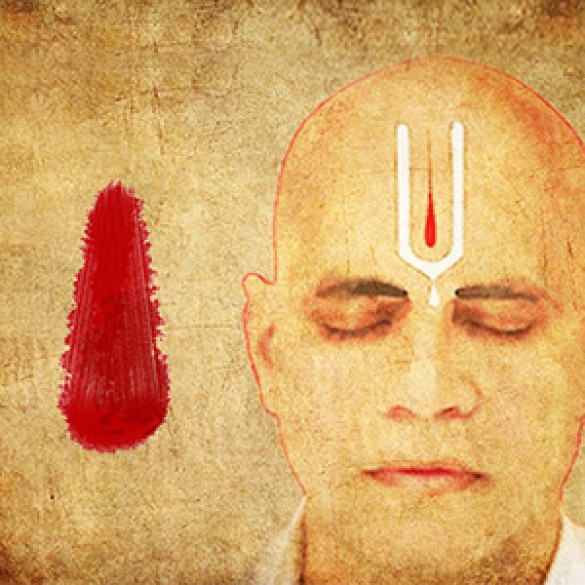
Hinduism, one of the world's oldest religions, encompasses a rich tapestry of rituals, customs, and practices. Among these, the tikka holds a special place, serving as a significant symbol of tradition and blessings. The tikka, also known as the tilaka or bindi, is a mark applied on the forehead, between the eyebrows. This article explores the importance of tikka in Hinduism and the various dimensions it holds within the religious and cultural context. The tikka is more than just a decorative mark; it holds spiritual and symbolic significance in Hinduism. The mark is traditionally made with vermilion, sandalwood paste, turmeric, or sacred ash (vibhuti). It represents the "third eye" or the spiritual eye, often associated with Lord Shiva, the Hindu deity of destruction and transformation. The placement of the tikka between the eyebrows is believed to activate one's inner spiritual energy and enhance concentration and focus.
ALSO READ - The Significance of Monday Fasting During Shravan: A Sacred Observance for Devotion and Blessings
The tikka is an integral part of Hindu worship and religious ceremonies. It is commonly applied during puja (ritual worship) and various religious festivals. Devotees apply tikka as a way to honor and invoke the blessings of the deities. It is a visible sign of one's devotion to the divine and an expression of reverence.Beyond its religious implications, the tikka carries social and cultural significance. In Hindu weddings, both the bride and groom wear tikka as part of their attire. It symbolizes auspiciousness, marital bliss, and protection from evil forces. Married Hindu women traditionally wear a red bindi or sindoor as a tikka, indicating their marital status and signifying the union of husband and wife.
ALSO READ - Hindu Religion: The cow is the abode of all the gods; know the benefits of feeding bread daily
The tikka is an essential part of Hindu identity and heritage. It distinguishes followers of Hinduism from other religious and cultural groups. For many Hindus, wearing the tikka is a way to assert their religious and cultural pride. It serves as a visible symbol of their faith and connects them to their ancient traditions and beliefs.The tikka transcends gender boundaries and holds different meanings for men and women. While women often wear tikka as a mark of beauty, femininity, and marital status, men also apply tikka to denote their religious affiliation and participation in rituals. The tikka unites both genders in their devotion to the divine and underscores the equality of spiritual practices.The tikka, with its spiritual, cultural, and social significance, plays a vital role in Hinduism. It embodies the rich tapestry of beliefs, customs, and traditions that form the bedrock of this ancient religion. From invoking blessings during worship to asserting one's religious identity, the tikka serves as a visible symbol of Hindu faith and a testament to the diversity and depth of Hindu culture. By adorning the tikka, Hindus honor their heritage and embrace their connection with the divine, perpetuating a sacred tradition that has endured for millennia.
ALSO READ - Exploring Shirdi: The Spiritual Abode of Shri Sai Baba